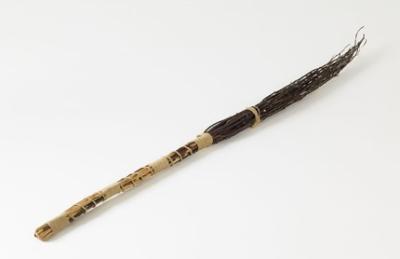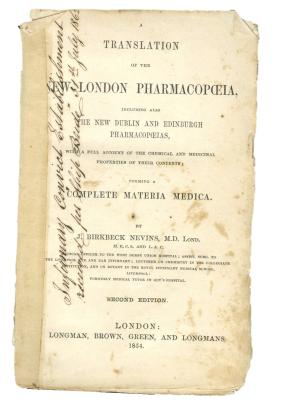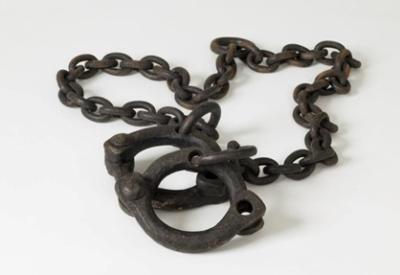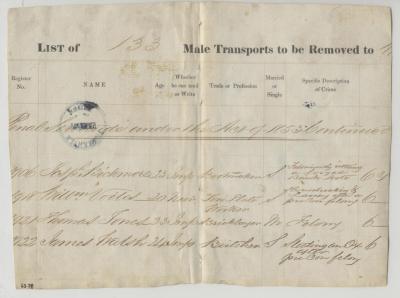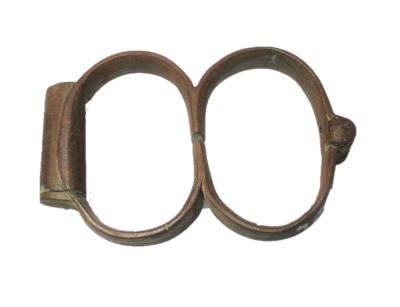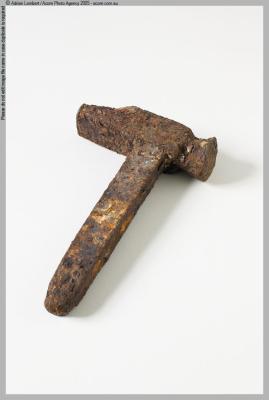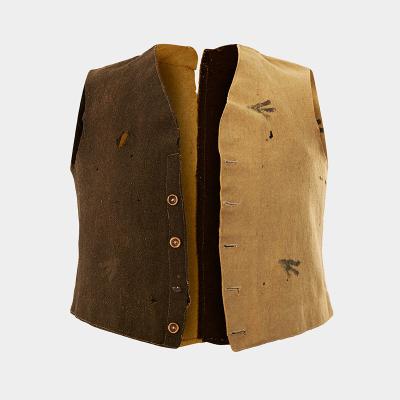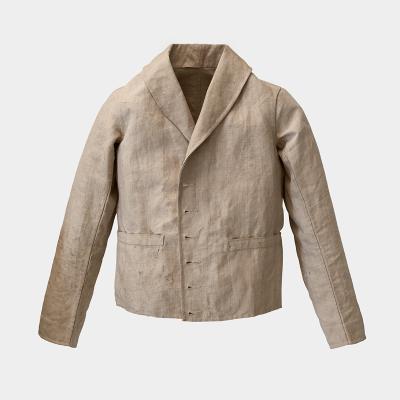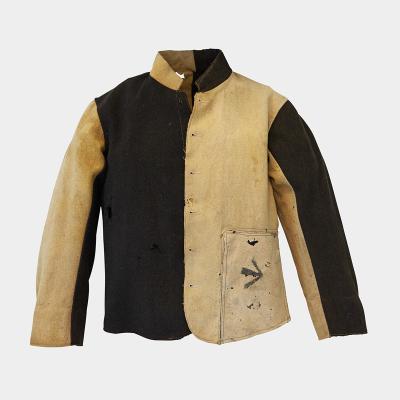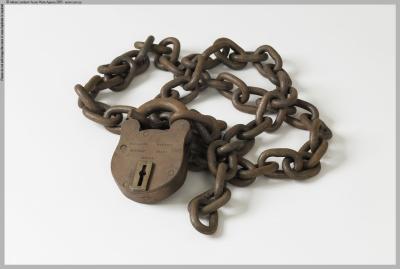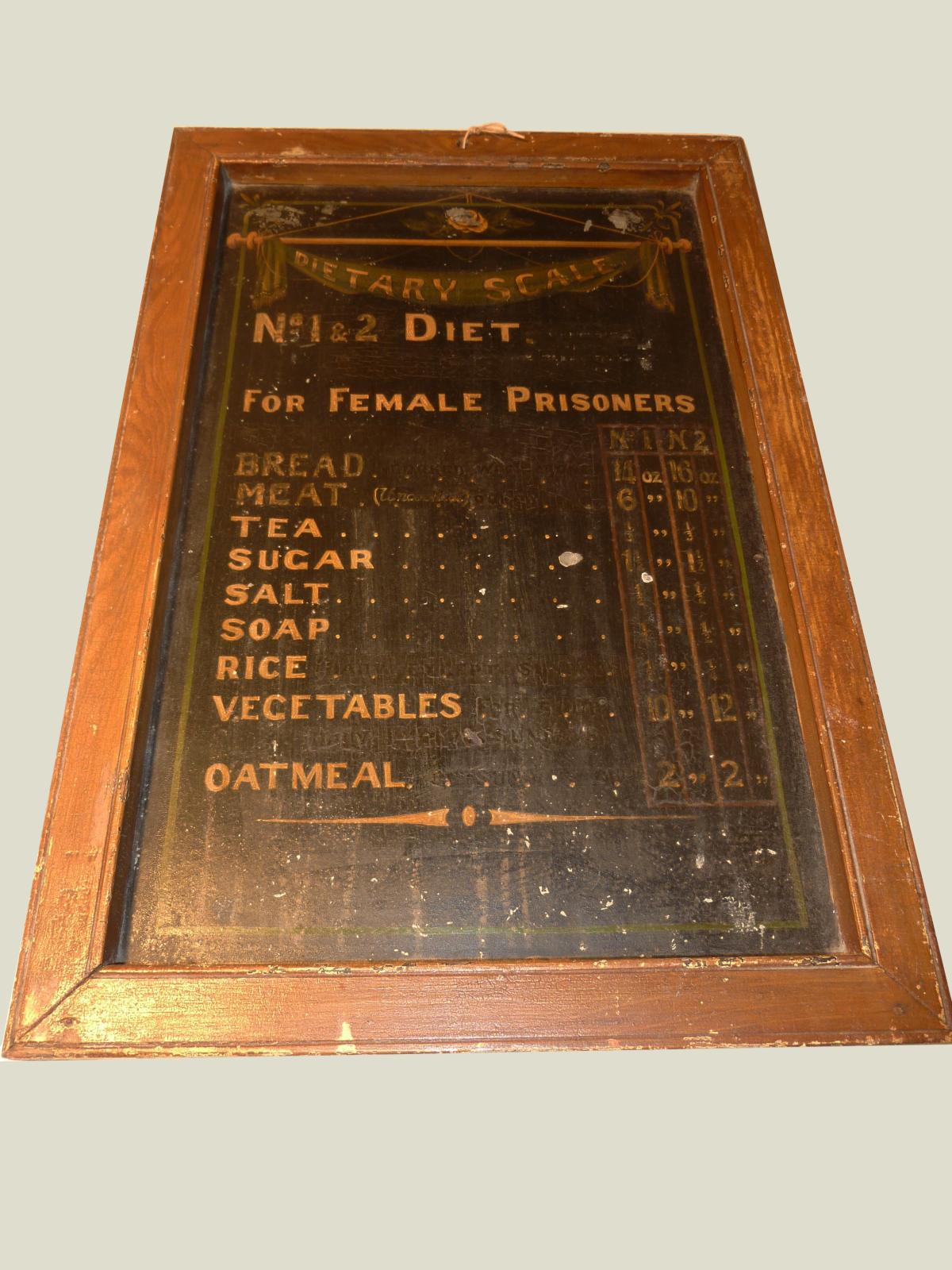FRAMED PRINTED NOTICE
Large, wooden, framed notice titled 'DIETARY SCALE / FOR FEMALE PRISONERS'. Printed in gold lettering on panel of sheet metal painted matt black and held in wooden frame painted brown. Text reads: DIETARY SCALE/No.1 & 2 DIET/FOR FEMALE PRISONERS/ BREAD/ MEAT/ TEA/ SUGAR/ SALT/ SOAP/ RICE/ VEGETABLES/ OATMEAL'.
Used in the Female Division of Fremantle Prison.
Details
Details
During the initial construction of the Convict Establishment there were no plans to include a female division. This had to change however in 1886, when the site ceased to be for the exclusive use of convicts, and was handed over to the Colonial Government. In 1887 it was recommended to the Colonial Secretary that all prisoners from Perth Gaol be transferred to Fremantle Prison, including the women. The female prisoner population at this time was relatively small, with an average of between 12 to 16 individuals on any given day, most of whom were serving short-term sentences.
The first evidence of a Female Division at Fremantle Prison appears in a document from 1888, which names the hospital building, in the north-east corner of the original convict site, as the location set aside for female prisoners. By 1889 the north-west corner of the site had been walled off from the main Prison and converted into a specific Female Division, including quarters for the matrons. In 1898 a new single storey eastern wing was added to the Female Division, which included an extra 22 cells, day room, hospital, chapel, lying in room, bath and earth closet. Finally in 1909 an upper range of 24 cells was added to the southern half of the east wing, and a new kitchen with lantern roof was added to the west of the original building.
The women’s cells were slightly larger than their male counterpart’s, and fitted with beds, not hammocks. The beds were constructed of timber, with mattresses made from teased coconut fibre. Like the male prisoners, the women also had slop and water buckets in their cells.
Prior to 1892, the Matron was the only warder in the Female Division, and was on call 24 hours a day. An Assistant Matron was appointed in 1892, and in 1896 two assistants were also appointed, perhaps owing to the increase in female prisoner numbers. These female officers were paid half of the male counterpart’s salaries. Some Matrons lived inside the Prison, whilst others lived in cottages just outside the main entrance.
Apart from a period between 1952 and 1966, the female prisoners prepared and cooked their own meals in their own kitchen facilities, which was eventually equipped with a refrigerator and electric stoves. As with many aspects of prison life, the amount and type of food consumed by the inmates was strictly regulated. Dietary scales, such as this one, specified the amount of food individual prisoners received. The scale was based upon the length of the prisoner’s sentence, their gender, ethnicity, and whether or not they were employed in hard labour.
The female prisoners were employed in two sectors of work during the first two decades after the incorporation of the Female Division at Fremantle Prison. Women serving sentences under six months were engaged in ‘light labour’, such as dusting, cleaning and oakum picking. These prisoners received a ‘number one ration’. The second type of employment was for women with longer sentences, who were engaged in ‘moderate labour’, which included gardening, making and mending clothes, and washing laundry for the male prisoners and warders. These women received ‘number two rations’, which allowed them to have two ounces more of bread, meat and vegetables than the number one ration. In addition to the food provided by this dietary scale, a prisoner in 1911 could earn ‘marks’ in the Prison for good behaviour and use that to purchase privileges, such as eggs, fruit, tobacco and butter.
On 13 March 1970 the Female Division of Fremantle Prison was vacated, and all female prisoners were relocated to the new Bandyup Rehabilitation Centre.
This dietary scale is one of only a few artefacts which has survived from the Female Division at Fremantle Prison.
Open in Google Maps
Nearest geotagged records:
- PHOTOGRAPH OF CATHOLIC CHAPEL AFTER 1988 RIOT (0km away)
- AD REM PRISON NEWSLETTER (0km away)
- CONCERT PROGRAMME (0km away)
- IMAGE OF CHRISTMAS FESTIVITIES (0km away)
- ENTRANCE TO FREMANTLE PRISON (0km away)
- IMAGE OF SALLY PORT (0km away)
- IMAGE OF THE MAIN CELL BLOCK (0km away)
- GATEHOUSE/RECEPTION (0km away)
- IMAGE OF BAKING BREAD (0km away)
- PHOTOGRAPH OF PRISON LIBRARY (0km away)
Nearby places: View all geotagged records »
